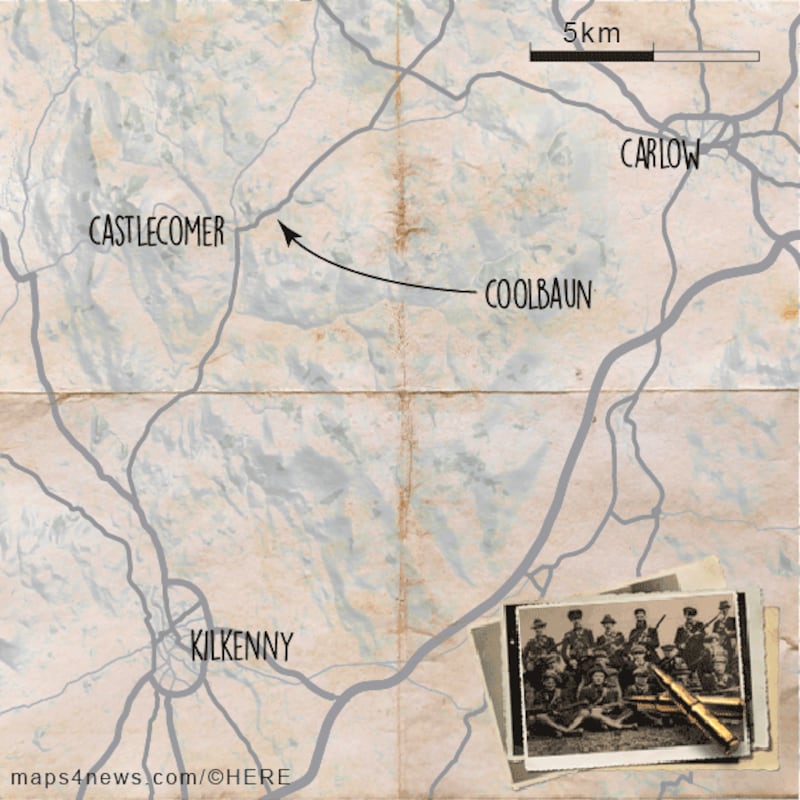County: Kilkenny
Incident: Failed ambush at Coolbawn, near Castlecomer
Date: June 18th, 1921
Fatalities: 2
Two IRA volunteers were killed while trying to lay a landmine for Crown forces just before the end of the War of Independence.
The ambush at Coolbawn outside Castlecomer three weeks before the truce of July 11th, 1921, was a disaster for the IRA and illustrated the pressure that British troops were exerting on it.
The raid had been sanctioned by Michael Collins as a diversionary operation by the IRA in Kilkenny because units further south were struggling with a surge in British troop numbers.
Thirty-six men from the Kilkenny Brigade took part in the operation. It was one of the few times the IRA used landmines in the War of Independence, as many of those involved were used to handling explosives because they worked in the mines in Castlecomer.
On June 18th, 1921, John Hartley and Nicholas Mullins, who were lying in wait, were shot dead by British forces acting on the tip-off of a local woman, Florrie Draper.
Her home was subsequently burnt out just four days before the truce.
The parents of both men successfully claimed for a dependency allowance from the State.
An account of the counter-ambush is contained in the pension file of Anne Mullins from Thomastown, Co Kilkenny, the mother of Nicholas Mullins. It came from the intelligence officer for the Kilkenny Brigade, a H Meighan.

“Mullins and his comrades were lying in wait to ambush a party of military from Castlecomer in a wooded district at Coolbawn,” he wrote.
“A lady named Miss Draper passed while the column of IRA men were there and apparently notified the military at Castlecomer of their whereabouts.
“A party of military came across the field later and surprised the volunteers, killing Mullins, Hartley and wounded a man named Doyle.”
Anne Mullins was granted a gratuity of £50 which was later increased to £100.
John Hartley’s father Edward also applied for a pension.
He was described in the pension files by the local chief inspector as a man of 59, a small farmer and in very poor circumstances. It was claimed that John Hartley, a grocer's assistant, had contributed about £50 a year to the support of his father. Edward Hartley was awarded a gratuity of £50 by the State.
The relations of two men executed by the Irish Free State on December 29th, 1922, during the Civil War, both claimed successfully for dependency allowances.
John Phelan and John Murphy were captured by National Army soldiers following a raid on Sheastown House near Bennettsbridge, Co Kilkenny. They were sentenced to death for being in possession of a rifle and a revolver used in a raid on the house where property worth almost £200 was stolen. The court found the raid had been sanctioned by the anti-Treaty IRA to raise funds.
Bridget Phelan said the execution of her husband, John Phelan, left her destitute as she had three young children and was dependent on her own father to bring up her children.
She was awarded an annual pension of £77 and 10 shillings a year by the Fianna Fáil government in 1934
Kate Murphy, the mother of John Murphy, received a partial dependents' gratuity of £112.10.00.
See also:
[ Kilkenny BrigadeOpens in new window ]










